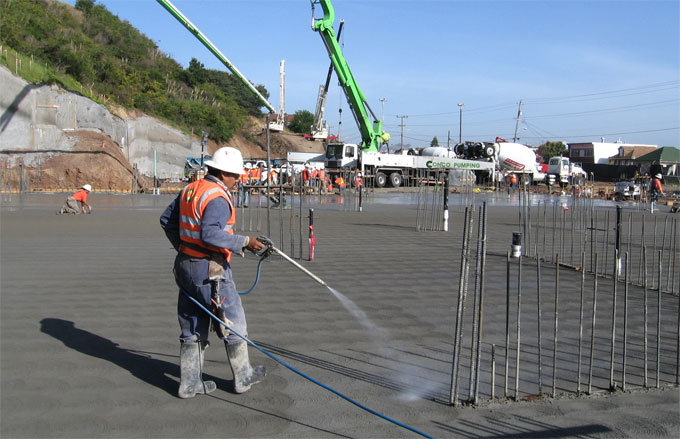
Why curing of concrete is important?

Curing offers the following functionalities :
1. Resist the concrete from getting dried throughout hydration. If this happens, the strength of the concrete is reduced significantly. The damage can?t be recovered. If concrete is dried, the cement grains will produce an impervious layer of hydration product around them, and it will resist recurring of hydration, though several occasion it is dampened again.
2. To maintain heat at the surface.
Curing is carried out for the following purposes :-
a. To get rid of frost damage (under 5?C, 40?F)
b. To raise initial strength
c. To minimize temperature gradients
When low temperatures decrease initial strength, the effect does not remain for a long time in case the concrete has not frozen, and it is consequently retained at higher temperatures. As a result, a sample that is retained at 5?C (40?F) will not completely hydrate (specifically if there exist a pozzolan in it), but even after a number of months it will hydrate again with higher temperature.
Since hydration occurs more slowly, cements containing pozzolans and GGBS normally need longer curing. It is therefore necessary that these concretes should be recognized on site, and cured sufficiently. The pozzolanic reaction will then produce extra hydration products to block some of the pores among the cement grains, and attain good strength.
Given below, some recognized process of curing :
? Cover materials (e.g., columns) in polythene once the shutters are detached.
? Spray with curing membrane as soon as detachment of shutters.
? Wrap slabs with polythene (and pour ground slabs on polythene).
? For heat retention, the polystyrene should be utilized on the back of shutters (particularly, steel ones)
? Just leave shutters in exact position for a few extra days (particularly wooden ones).
? 50 mm of sand is well suited on slabs.
? Ponding (i.e., developing a pool on the concrete surface) will be definitely most suitable.
Note about curing:
? Ensure that curing is provided immediately as possible. A few hours may provide significant effect.
? Spray-on curing membranes are less effective, and in windy conditions they should not be used. On complicated areas (like columns), they should be used as there is no other options.
? Keep in mind that PFA, GGBS and, especially, CSF requires much better curing (frequently 5 days, in spite of 3 days).
? Allowing the bleed water to dry off will lead to more bleeding, and plastic cracking.
? Slabs on ground should contain a polythene sheet that is arranged under them, to get rid of excessive water absorption with dry soils.


